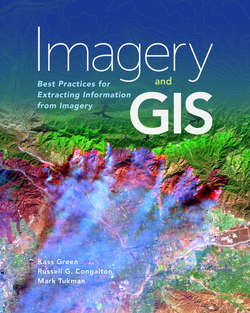Читать книгу Imagery and GIS - Kass Green - Страница 85
На сайте Литреса книга снята с продажи.
Hyperspectral Imagery — All Spatial Resolutions
ОглавлениеHyperspectral imagery is not generally available from remote sensing systems and is most often flown on aircraft for specific projects. While flown by both private and public agencies, the most well-known hyperspectral remote sensing system is NASA’s AVIRIS, which operates an optical sensor capturing the spectral radiance in 224 contiguous spectral bands with wavelengths from 400 to 2500 nanometers. AVIRIS has been flown from 1992 to the present on four aircraft platforms mostly over the United States and Canada. The AVIRIS archive can be searched and data can be downloaded from http://aviris.jpl.nasa.gov/alt_locator/.
The only civilian source of hyperspectral satellite imagery is collected by the Hyperion sensor operating on the Earth Observing 1 (EO-1) Extended Mission. It is able to resolve 220 spectral bands (from 0.4 to 2.5 μm) at a 30-m spatial resolution. The EO-1 satellite was launched November 21, 2000, as a one-year technology demonstration/validation mission. After the initial technology mission was completed, NASA and the USGS agreed to the continuation of the EO-1 program as an extended mission. The EO-1 Extended Mission is chartered to collect and distribute Hyperion hyperspectral and Advanced Land Imager multispectral products according to customer tasking requests. Archived Hyperion imagery is available for search and download from the USGS EROS (http://eo1.usgs.gov/products/search).
